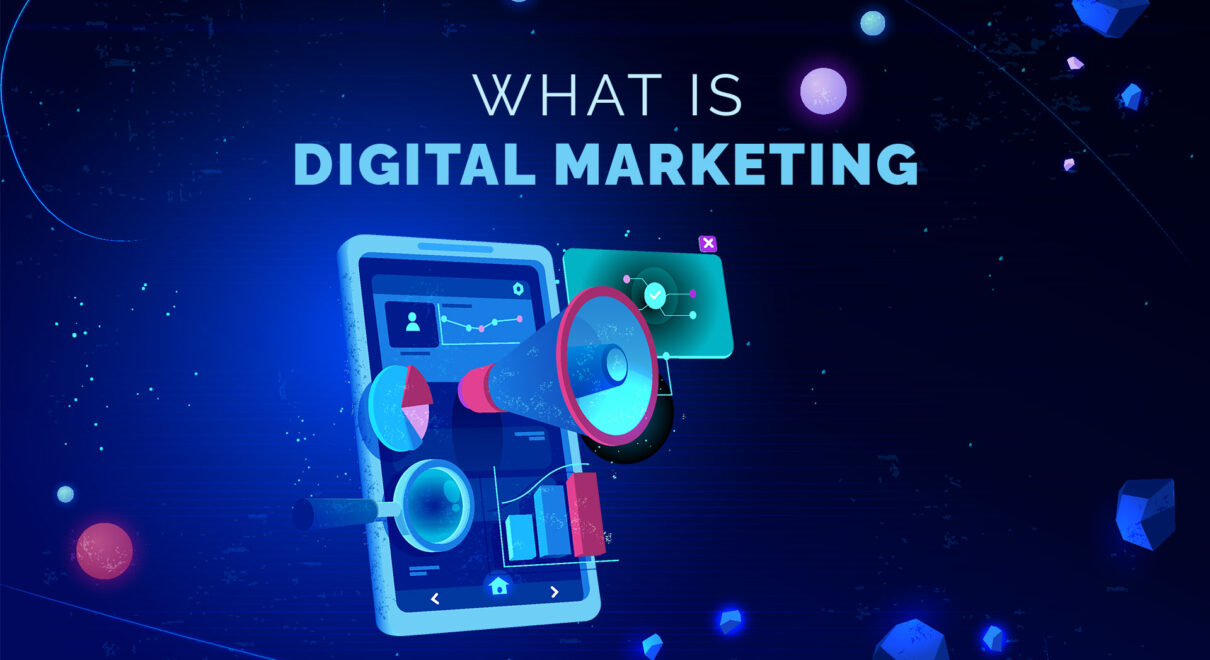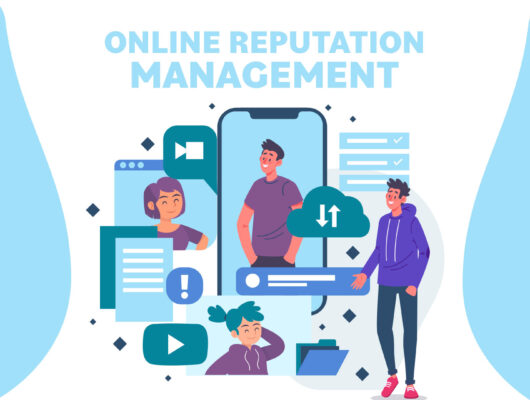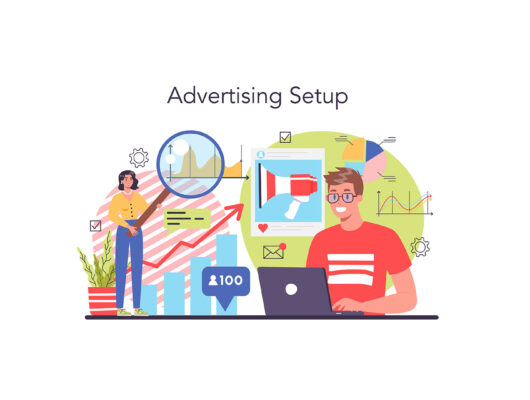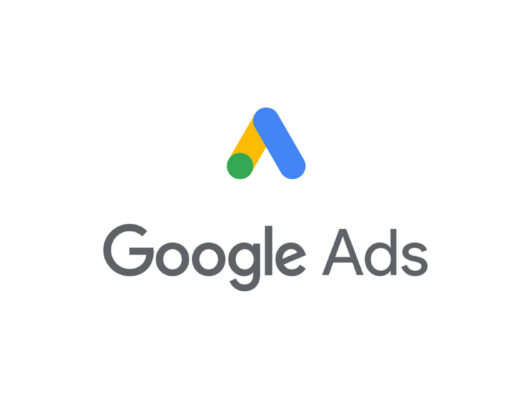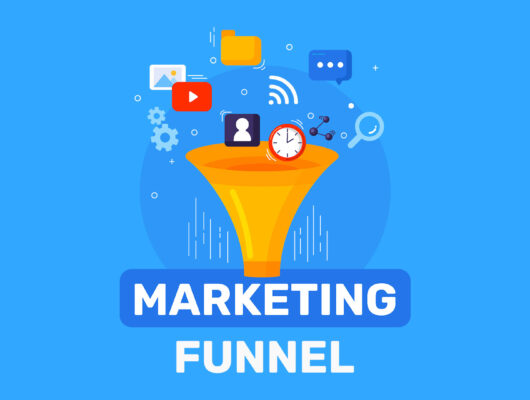Digital marketing is the promotion of products or services using digital technologies, mainly on the internet, but also including mobile phones, display advertising, and any other digital medium. It aims to reach a target audience through various digital channels to promote brand awareness, drive traffic, and ultimately generate leads and conversions. It’s all about leveraging your content marketing and social media channels to build an audience of engaged customers, who turn into loyal & valued clients.
As the days, months and years pile up, a business grows into a complex system. Today, the digital world is fast becoming the way in which to conduct business and interact with customers. In order to be successful in this arena, you need to consider a range of strategies and tactics–Social Media Marketing on Facebook, Twitter and LinkedIn; Social Media Advertising; Marketing Strategy; E-Commerce Marketing and Content Writing.
Digital Marketing
Digital marketing is an effective way to acquire new customers, build brand awareness, and increase sales for both small business and startups. Our digital marketing services include social media management, website design and development, email marketing and PPC campaigns to help you reach your target audience on multiple channels–mobile, desktop, tablets and social media.
In this blog post, we will help you understand the strategies and tips for small business and startups to improve their overall marketing position. Social Media Marketing, Social Media Advertising and E-Commerce Marketing will be discussed in detail as well.
Strategies and Tips
Here are some strategies and tips for small businesses and startups to improve their overall marketing position:
- Define your target audience: Understanding your target audience will help you to create relevant and effective marketing campaigns.
- Establish a strong online presence: This includes creating a website, social media accounts, and listing your business in online directories.
- Content marketing: Create valuable and relevant content that appeals to your target audience. This can include blog posts, infographics, and videos.
- Search engine optimization (SEO): Optimize your website and content for search engines to improve visibility and attract organic traffic.
- Email marketing: Build a list of email subscribers and regularly send them relevant and valuable content.
- Influencer marketing: Partner with influencers in your industry to reach a larger audience.
- Social media advertising: Utilize social media platforms to reach your target audience with targeted advertising.
- Offer promotions and discounts: Offer promotions and discounts to attract and retain customers.
- Network and collaborate: Attend industry events, join local business groups, and collaborate with other businesses to reach a larger audience.
- Measure and analyze: Regularly measure the success of your marketing efforts and use the data to make informed decisions and improve your overall marketing strategy.
The first step in any successful digital marketing plan is to determine what kind of target audience you want to attract and how much time they spend online each day. Once that has been determined, it’s important to find ways to reach them with relevant content and ads that will keep them on your page—or at least make them think about coming back later.
Establish a Strong Online Presence
Establishing a strong online presence is critical for small businesses and startups in today’s digital age. Here are some steps to help you establish a strong online presence:
- Create a website: A website is the foundation of your online presence and is the first point of contact for many potential customers. It should be professional, easy to navigate, and optimized for search engines.
- Use social media: Choose the social media platforms that are most relevant to your target audience and use them to engage with customers and share your brand message.
- List your business in online directories: This can include directories such as Google My Business, Yelp, and Yellow Pages. This will help your business to be easily found online.
- Encourage online reviews: Encourage customers to leave reviews on your website, social media, and business listings. Positive reviews can increase your online credibility and attract new customers.
- Optimize for mobile: Ensure that your website and online presence are optimized for mobile devices as more and more customers are using their phones to search for and interact with businesses online.
- Use high-quality visuals: Use professional images and videos to showcase your products and services and make a strong impression on potential customers.
- Consistently update your online presence: Regularly update your website, social media accounts, and business listings to keep your information accurate and current.
By establishing a strong online presence, you can reach a wider audience, increase brand visibility, and ultimately drive more traffic and sales for your business.
Content Marketing
Content marketing is a strategy that focuses on creating and sharing valuable and relevant content to attract and retain a clearly defined audience and ultimately drive profitable customer action. Here are some tips for successful content marketing:
- Know your audience: Understanding your target audience is critical to creating content that resonates with them. Consider their interests, needs, and pain points when creating content.
- Choose the right format: Different types of content, such as blog posts, videos, infographics, and podcasts, appeal to different audiences. Choose the format that is most effective for reaching your target audience.
- Create high-quality content: Ensure that your content is well-researched, well-written, and provides value to your audience. High-quality content can help establish your brand as a thought leader in your industry.
- Optimize for search engines: Use keywords and meta descriptions in your content to optimize it for search engines and improve its visibility.
- Promote your content: Share your content on your website, social media, and other online channels to reach a wider audience. Consider using paid promotion to reach a larger audience.
- Repurpose your content: Consider repurposing your content into different formats, such as turning a blog post into a video or an infographic. This can help reach a wider audience and maximize the impact of your content.
- Analyze and adjust: Use analytics to measure the success of your content marketing efforts and adjust your strategy as needed.
Content marketing can help build brand awareness, establish your business as a thought leader in your industry, and ultimately drive more traffic and conversions.
Search Engine Optimization (SEO)
Search engine optimization (SEO) is the process of optimizing your website and its content to improve its visibility and ranking in search engine results pages (SERPs). This can help drive organic traffic to your website and increase your online visibility. Here are some tips for effective SEO:
- Keyword research: Research keywords related to your products or services and use them in your website content and meta tags to improve your search visibility.
- On-page optimization: Optimize individual pages on your website by using relevant keywords in your headings, meta tags, and body content.
- Quality content: Ensure that your website contains high-quality, relevant, and valuable content that appeals to both users and search engines.
- Technical optimization: Ensure that your website is technically optimized, including being mobile-friendly, having a fast loading speed, and having a well-structured URL structure.
- Backlinks: Obtain high-quality backlinks from reputable websites, which can improve your website’s authority and search ranking.
- Local SEO: Optimize your website for local search by claiming your Google My Business listing, creating local listings, and including your location information on your website.
- Track and measure: Use tools such as Google Analytics to track your website’s organic traffic and monitor your search engine rankings. Use this data to continuously refine and improve your SEO strategy.
SEO is a long-term strategy and requires ongoing effort, but it can be a highly effective way to improve your online visibility and drive organic traffic to your website.
Email Marketing
Email marketing is the process of using email to promote your products or services, build relationships with customers, and drive sales. Here are some tips for successful email marketing:
- Build a targeted email list: Build a targeted email list of customers and prospects who have expressed an interest in your products or services.
- Personalize your emails: Personalize your emails by addressing your recipients by name, segmenting your list based on interests and behavior, and including relevant content and offers.
- Use a clear subject line: Use a clear and attention-grabbing subject line that accurately reflects the content of your email and entices the recipient to open it.
- Keep it visually appealing: Use a clean and visually appealing design that includes images, graphics, and a clear call to action.
- Optimize for mobile: Ensure that your emails are optimized for viewing on mobile devices, as more and more customers are using their phones to check their email.
- Test and refine: Regularly test your emails, including subject lines, design, and calls to action, to continually refine and improve your email marketing efforts.
- Analyze and adjust: Use analytics to measure the success of your email marketing campaigns and adjust your strategy as needed.
Email marketing can be a cost-effective and highly targeted way to reach your customers and drive conversions. By following best practices and continually testing and refining your strategy, you can maximize the effectiveness of your email marketing efforts.
Influencer Marketing
Influencer marketing is a type of marketing that leverages the endorsement and promotion of a product or service by individuals with a significant online following, known as influencers. The goal of influencer marketing is to reach a large, engaged audience and build credibility and trust through word-of-mouth recommendations. Here are some tips for successful influencer marketing:
- Identify the right influencers: Identify influencers in your industry who have a strong following and are a good fit for your brand. Consider their engagement rate, audience demographics, and content quality.
- Define your goals: Clearly define your goals for your influencer marketing campaign, such as increasing brand awareness, driving sales, or establishing thought leadership.
- Offer value: Offer influencers a compelling reason to promote your products or services, such as an exclusive discount or early access to new products.
- Be transparent: Be transparent with influencers about your expectations and the terms of your partnership. Ensure that your influencer marketing campaign adheres to all legal and ethical guidelines.
- Measure and analyze: Use analytics to measure the success of your influencer marketing campaign, including reach, engagement, and conversions. Use this data to refine and improve your strategy.
Influencer marketing can be a highly effective way to reach a large, engaged audience and build credibility and trust for your brand. By partnering with the right influencers and following best practices, you can maximize the impact of your influencer marketing efforts.
Social Media Advertising
Social media advertising is the process of using social media platforms such as Facebook, Instagram, Twitter, and LinkedIn to promote your products or services. Here are some tips for successful social media advertising:
- Define your target audience: Clearly define your target audience, including demographics, interests, behaviors, and geographic location.
- Choose the right platform: Choose the social media platform that is most likely to reach your target audience and aligns with your business goals.
- Create compelling ads: Create visually appealing and relevant ads that clearly communicate your value proposition and include a clear call to action.
- Test and refine: Regularly test and refine your social media ads, including ad copy, images, and targeting, to continually improve performance.
- Use data and analytics: Use data and analytics to measure the success of your social media advertising campaigns and adjust your strategy as needed.
- Leverage retargeting: Use retargeting to reach users who have previously interacted with your brand or website, such as by visiting your website or engaging with your content.
Social media advertising can be a highly effective way to reach a large and targeted audience, drive traffic and sales, and increase brand awareness. By following best practices and using data and analytics to continually refine and improve your strategy, you can maximize the impact of your social media advertising efforts.
Offering Promotions and Discounts
Offering promotions and discounts can be a highly effective way to drive sales, build customer loyalty, and increase brand awareness. Here are some tips for successful promotions and discounts:
- Define your goals: Clearly define your goals for your promotion or discount, such as increasing sales, driving traffic, or building customer loyalty.
- Choose the right offer: Choose an offer that is relevant and appealing to your target audience and aligns with your business goals.
- Make it timely: Make your offer timely and relevant, such as offering a discount during a slow sales period or to celebrate a holiday or special event.
- Promote your offer: Promote your offer through a variety of channels, such as email marketing, social media, and advertising, to reach a large and targeted audience.
- Use clear and compelling language: Use clear and compelling language in your promotions and discounts, including a clear call to action and a sense of urgency.
- Analyze and adjust: Use analytics to measure the success of your promotions and discounts and adjust your strategy as needed.
Offering promotions and discounts can be a cost-effective way to drive sales and build customer loyalty. By following best practices and using data and analytics to continually refine and improve your strategy, you can maximize the impact of your promotions and discounts.
Networking and Collaboration
Networking and collaboration can be a highly effective way to build relationships, increase brand awareness, and drive growth for your small business or startup. Here are some tips for successful networking and collaboration:
- Attend industry events: Attend industry events, such as conferences, trade shows, and networking events, to meet potential partners, customers, and collaborators.
- Leverage social media: Use social media platforms such as LinkedIn to connect with potential partners, customers, and collaborators.
- Partner with complementary businesses: Partner with complementary businesses to cross-promote each other’s products or services and reach new audiences.
- Offer value: Offer value to potential partners, such as access to your expertise, resources, or customer base, to build strong relationships and establish trust.
- Follow up: Follow up with new contacts promptly and regularly to maintain the relationship and explore potential opportunities for collaboration.
- Give back: Consider volunteering or supporting causes in your community to build relationships and establish your brand as a responsible and engaged member of your community.
By following best practices and building strong relationships based on mutual trust and value, you can maximize the impact of your networking and collaboration efforts.
Measurement and Analysis
Measurement and analysis is crucial for understanding the effectiveness of your marketing efforts and making informed decisions about how to improve. Here are some tips for successful measurement and analysis:
- Choose the right metrics: Choose metrics that align with your business goals, such as website traffic, conversion rate, and customer lifetime value.
- Use analytics tools: Use analytics tools such as Google Analytics to track and analyze key metrics, and to understand user behavior on your website.
- Establish a baseline: Establish a baseline for key metrics, such as website traffic, conversion rate, and customer lifetime value, to track progress over time.
- Track progress regularly: Track progress regularly, such as weekly or monthly, to understand the impact of your marketing efforts and make informed decisions about how to improve.
- Test and refine: Regularly test and refine your marketing efforts, including ad copy, images, and targeting, to continually improve performance.
- Report and share insights: Report and share insights with your team and stakeholders to gain buy-in and support for your marketing efforts.
Measurement and analysis is a critical component of successful marketing. By choosing the right metrics, using analytics tools, and continually refining your efforts based on data and insights, you can make informed decisions that drive growth for your small business or startup.
Our team combines expertise and creativity to create results that exceed your expectations. Whether it’s a new website, viral Facebook campaign or retargeting strategy – we’ll bring the right strategy to see your goals realized.
We build scalable digital marketing strategies that engage your customers, drive leads and sales, and streamline your workflow. Utilize our modern, results-driven digital marketing services to meet your business objectives. Our expertise in SEO, AdWords, social media marketing, and Email Marketing will have your company making a name for itself in no time.


